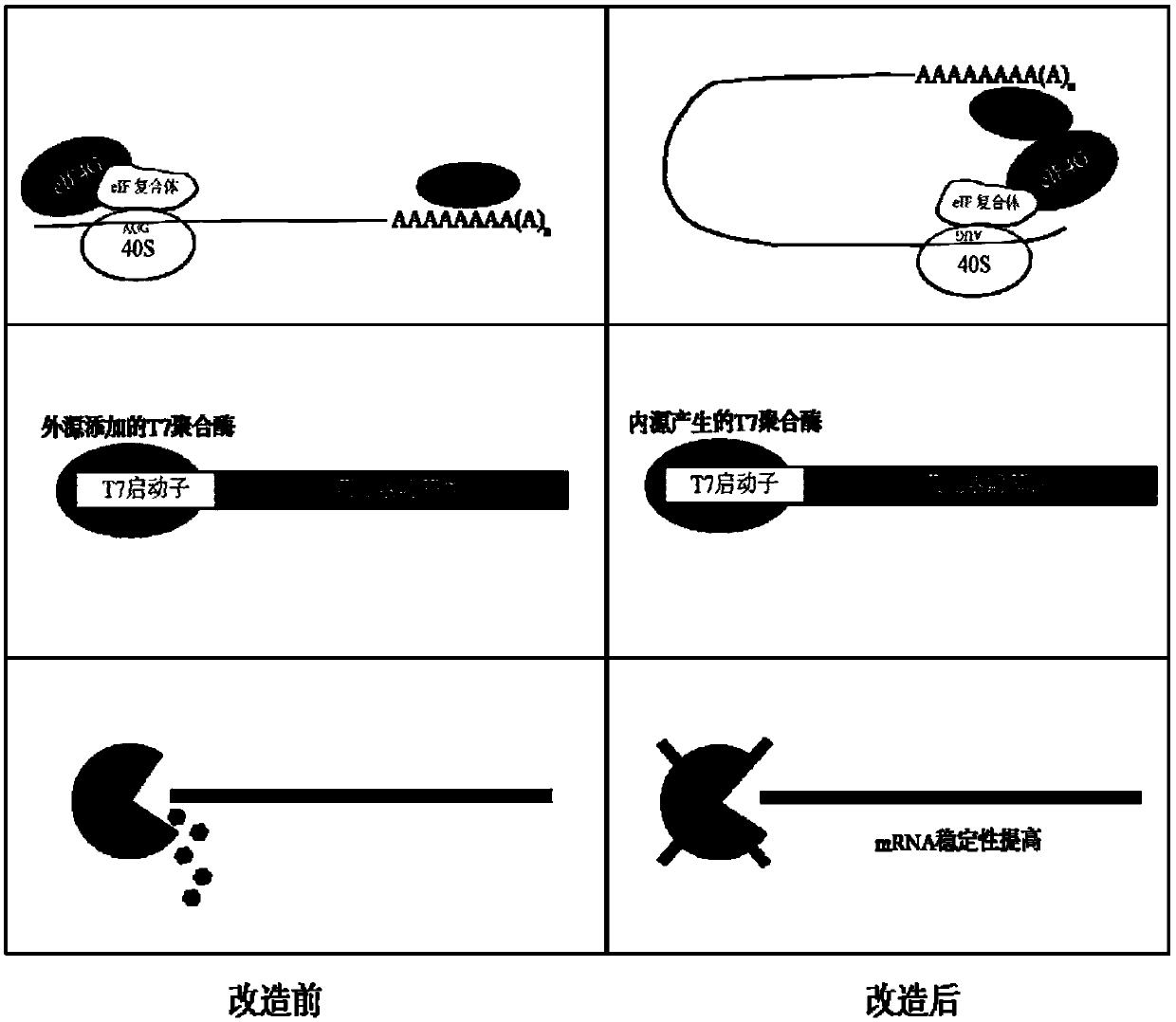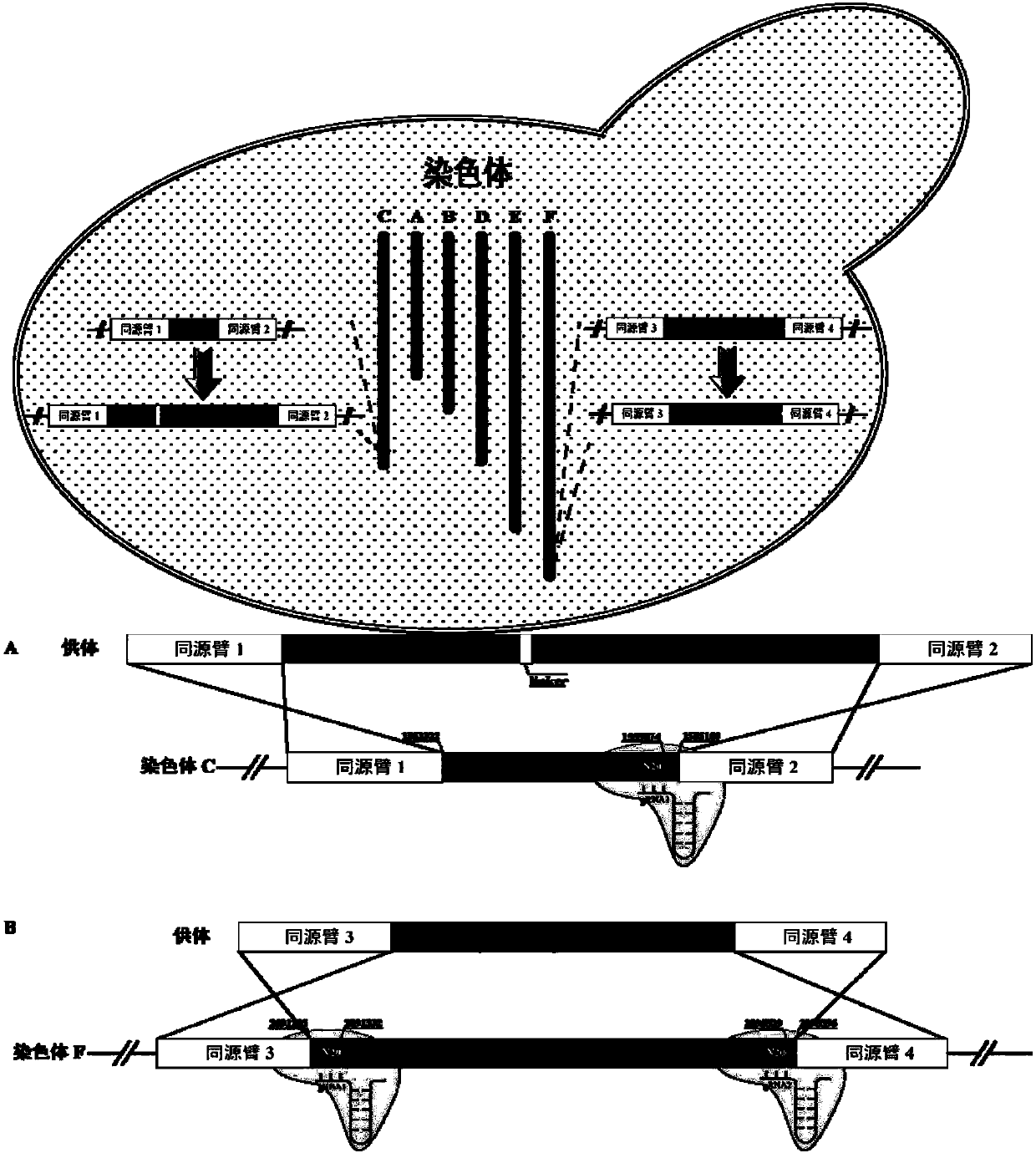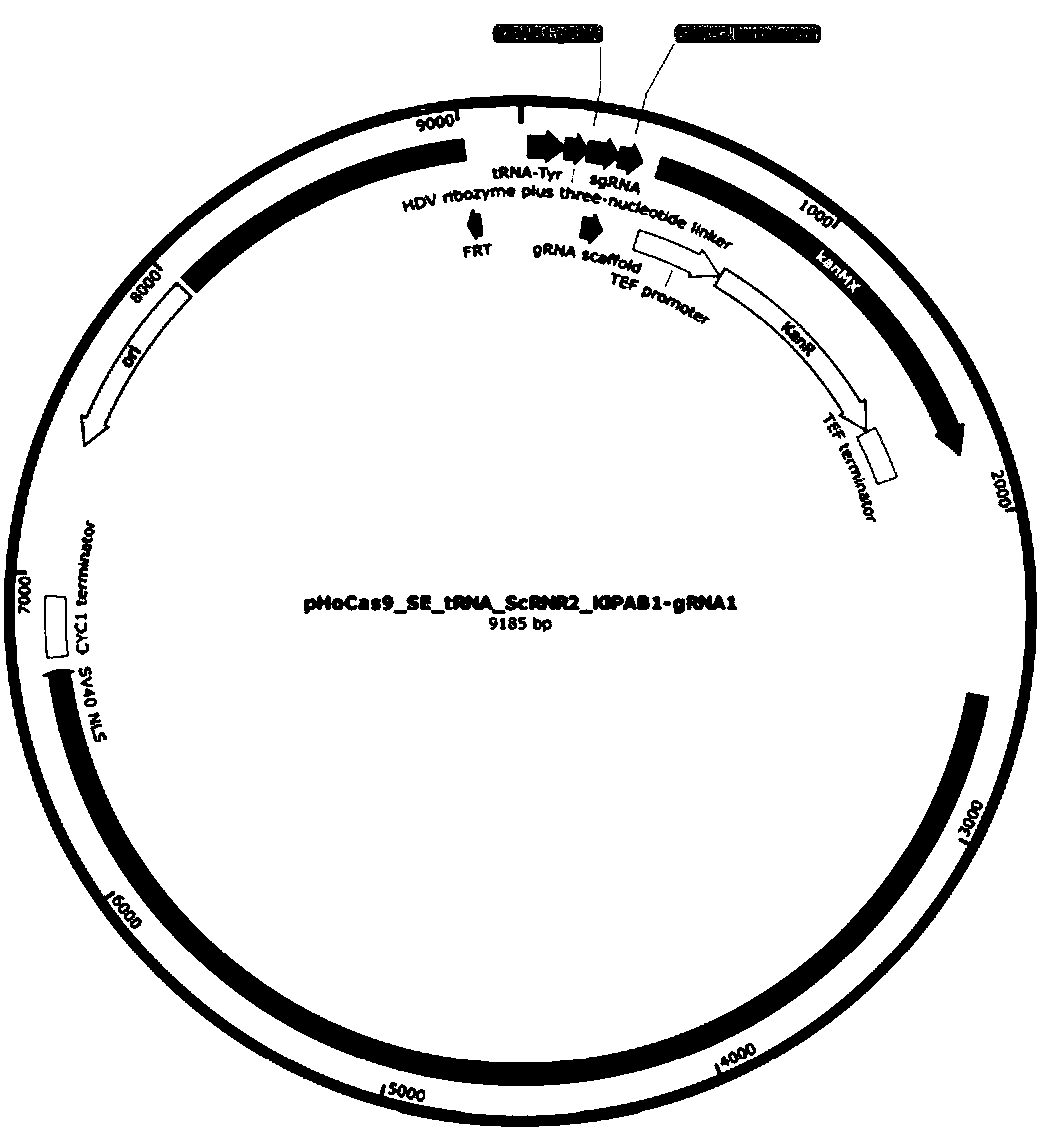Method for improving protein synthesis efficiency in cells
A protein synthesis, cell-free protein technology, applied in the field of improving protein synthesis efficiency, can solve the problems of leakage, lack of enzyme-enzyme complexes and cofactors, poor transcriptional modularity, etc., and achieve the effect of improving translation efficiency
- Summary
- Abstract
- Description
- Claims
- Application Information
AI Technical Summary
Problems solved by technology
Method used
Image
Examples
preparation example Construction
[0337] In the present invention, the preparation method of the yeast cell extract is not limited, and a preferred preparation method includes the following steps:
[0338] (i) providing yeast cells;
[0339] (ii) washing the yeast cells to obtain washed yeast cells;
[0340] (iii) subjecting the washed yeast cells to destructive treatment to obtain crude yeast extract;
[0341] (iv) performing solid-liquid separation on the crude yeast extract to obtain the liquid part, which is the yeast cell extract.
[0342] In the present invention, the solid-liquid separation method is not particularly limited, and a preferred method is centrifugation.
[0343] In a preferred embodiment, said centrifugation is performed in a liquid state.
[0344] In the present invention, the centrifugation conditions are not particularly limited, and a preferred centrifugation condition is 5000-100000 g, preferably 8000-30000 g.
[0345] In the present invention, the centrifugation time is not parti...
Embodiment 1
[0364] Example 1 Construction of a new type of fusion protein, greatly improving in vitro translation efficiency
[0365] 1.1 Through CRISPR-Cas9 gene editing technology, optimize the translation initiation factors eIF4G and Pab1 in K. lactis, and fuse KleIF4G with its interacting protein to improve the efficiency of the cell-free in vitro translation system.
[0366] Sequence search and CRISPR gRNA sequence determination
[0367] The present invention uses CRISPR-Cas9 gene editing technology to fuse KlPab1 and KleIF4G to promote the interaction between the two, so as to improve in vitro translation efficiency.
[0368] Based on the Pab1 sequence, the KlPab1 gene sequence (located at 1553322...1555100 on chromosome C) in Kluyveromyces lactis was obtained. Search for the PAM sequence (NGG) near the stop codon of the KlPab1 gene, and determine the gRNA sequence. The principle of gRNA selection is: moderate GC content, the standard of the present invention is 40%-60% GC content...
Embodiment 2
[0381] Example 2 By knocking out the nuclease KlEXN53, endogenously expressing T7RNP with a specific activation strength ScRNR2, reducing or not adding additional T7RNP to improve in vitro translation efficiency.
[0382] Background and Analysis of Biosynthesis in Organisms
[0383] In vivo biosynthesis refers to the synthesis process of various compounds catalyzed by enzymes in organisms, including photosynthesis, gluconeogenesis, and biosynthesis of macromolecules such as nucleotides, nucleic acids, and proteins. Among them, protein synthesis is the most important in quantity.
[0384] The whole process of biosynthesis includes transcription and translation, which is the transfer of genetic information from DNA to RNA. That is, one strand of double-stranded DNA is used as a template, and four kinds of nucleoside triphosphates (adenotriphosphorus (ATP), cytotriphosphorus (CTP), guaninetriphosphorus (GTP) and urinary triphosphate (UTP)) are used as raw materials. The process...
PUM
 Login to View More
Login to View More Abstract
Description
Claims
Application Information
 Login to View More
Login to View More - R&D
- Intellectual Property
- Life Sciences
- Materials
- Tech Scout
- Unparalleled Data Quality
- Higher Quality Content
- 60% Fewer Hallucinations
Browse by: Latest US Patents, China's latest patents, Technical Efficacy Thesaurus, Application Domain, Technology Topic, Popular Technical Reports.
© 2025 PatSnap. All rights reserved.Legal|Privacy policy|Modern Slavery Act Transparency Statement|Sitemap|About US| Contact US: help@patsnap.com



